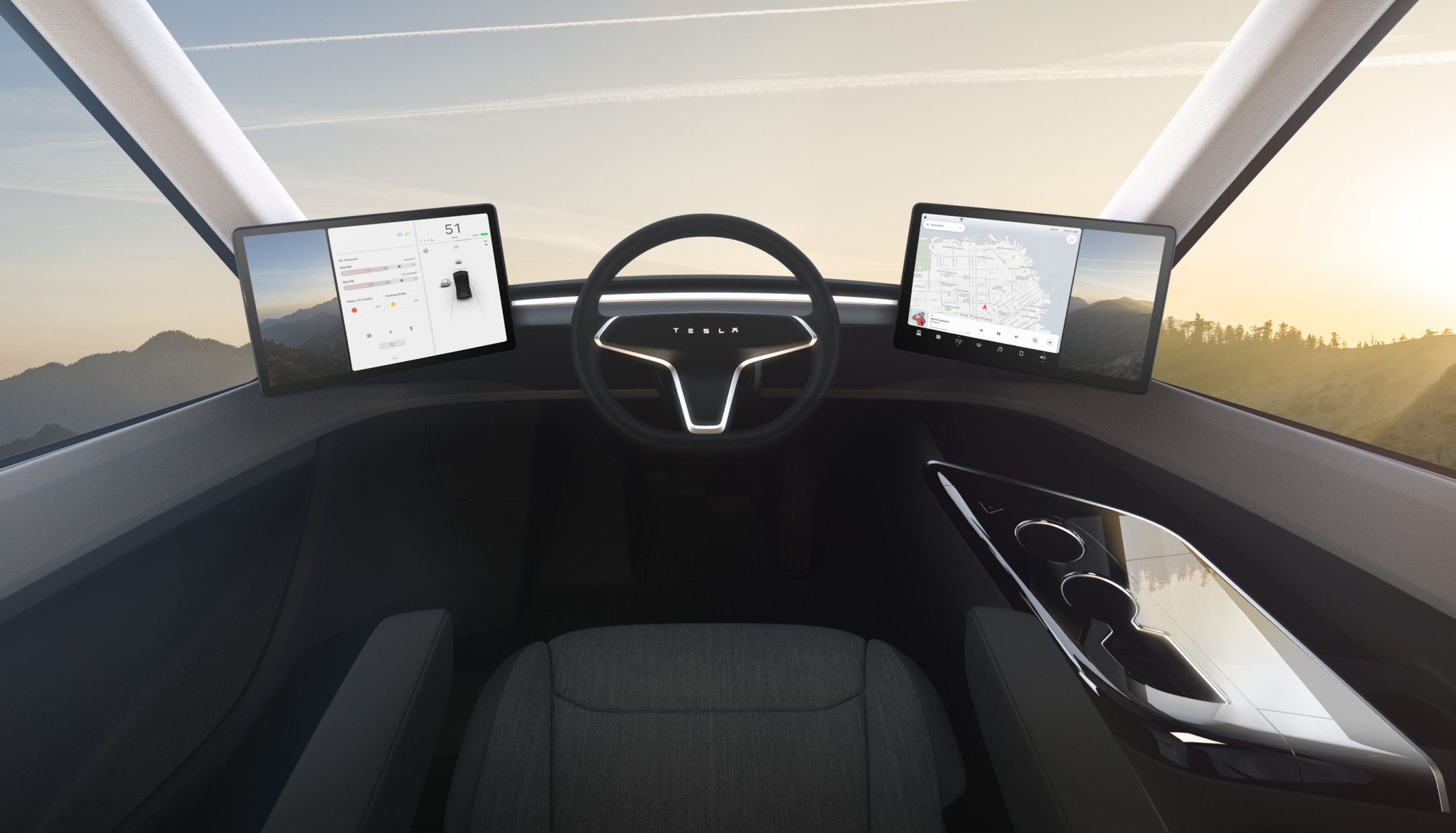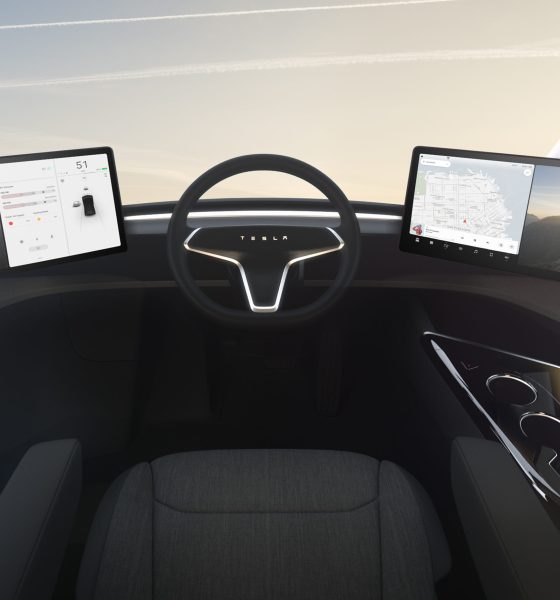

News
Tesla Semi will power US-based mobile television provider MTVG
American mobile unit provider Mobile TV Group has placed orders for two Tesla Semis, joining the growing list of local and foreign firms that have committed to CEO Elon Musk’s vision of an emissions-free trucking industry. A pair of Tesla Semis will join MTVG’s fleet of long-haulers, which are equipped with ultra-high definition broadcasting technology and deployed across the country to provide live event coverage.
Mobile TV Group director of business development Nick Garvin noted that the company’s decision to place orders for the Tesla Semi was an easy decision for the firm. The MTVG executive noted that the electric trucks would serve as yet another step for the company in its ongoing initiatives to embrace a greener system, which Garvin believes is pivotal in strengthening the firm’s relationship with its clients.
“It was a pretty easy decision. We think that it makes sense as part of our own green initiative, and our clients are always interested in being greener. We feel like this is a very important step in the right direction for our future and the future of our clients,” Garvin said.
Similar to other global firms that have recently committed to the purchase of Tesla’s Semi, such as Middle Eastern environmental and waste management firm Bee’ah, Mobile TV Group has been involved in green initiatives long before it placed its orders for the quad electric motor truck. So far, MTVG has rolled out several environment-friendly initiatives, such as the use of ultra-compressed recycled paper for walls and framing — materials which it uses in its operations.
Apart from being in line with the company’s efforts to go green, the MTVG executive also noted that the Tesla Semi was simply a practical choice for the company’s needs. According to Garmin, Tesla Semi’s range of 500 miles per charge is a non-issue, since a lot of MTVG’s business is focused on providing coverage solutions for Regional Sports Networks. With this in mind, the Semi’s range per charge would be more than adequate.
Perhaps the most practical reason behind Mobile TV Group’s decision to reserve two units of the Tesla Semi, however, is the electric vehicles’ reliability and low maintenance cost. The Semi, after all, has far fewer components compared to a traditional diesel truck. According to the MTVG executive, the Tesla Semi’s reliability is actually one of its most significant selling points, as businesses like Mobile TV Group consider incidents like engine breakdowns as down as one of its biggest headaches.
“A fundamental advantage of the Tesla is, there are significantly less parts compared to a combustion engine, which just means less things can go wrong. It just means less points of failure, so it’s less likely for something to break down, which is obviously one of our biggest nightmares,” Garvin said.
The Tesla Semi is a Class 8 long-hauler, capable of towing up to 80,000 pounds of cargo. Built with four electric motors derived from the Model 3, the truck is capable of hitting highways speeds in 20 seconds, far quicker than any diesel semi-trailer deployed on the road today.
First deliveries for the Tesla Semi are expected to take place in 2019.

News
Tesla starts showing how FSD will change lives in Europe
Local officials tested the system on narrow country roads and were impressed by FSD’s smooth, human-like driving, with some calling the service a game-changer for everyday life in areas that are far from urban centers.

Tesla has launched Europe’s first public shuttle service using Full Self-Driving (Supervised) in the rural Eifelkreis Bitburg-Prüm region of Germany, demonstrating how the technology can restore independence and mobility for people who struggle with limited transport options.
Local officials tested the system on narrow country roads and were impressed by FSD’s smooth, human-like driving, with some calling the service a game-changer for everyday life in areas that are far from urban centers.
Officials see real impact on rural residents
Arzfeld Mayor Johannes Kuhl and District Administrator Andreas Kruppert personally tested the Tesla shuttle service. This allowed them to see just how well FSD navigated winding lanes and rural roads confidently. Kruppert said, “Autonomous driving sounds like science fiction to many, but we simply see here that it works totally well in rural regions too.” Kuhl, for his part, also noted that FSD “feels like a very experienced driver.”
The pilot complements the area’s “Citizen Bus” program, which provides on-demand rides for elderly residents who can no longer drive themselves. Tesla Europe shared a video of a demonstration of the service, highlighting how FSD gives people their freedom back, even in places where public transport is not as prevalent.
What the Ministry for Economic Affairs and Transport says
Rhineland-Palatinate’s Minister Daniela Schmitt supported the project, praising the collaboration that made this “first of its kind in Europe” possible. As per the ministry, the rural rollout for the service shows FSD’s potential beyond major cities, and it delivers tangible benefits like grocery runs, doctor visits, and social connections for isolated residents.
“Reliable and flexible mobility is especially vital in rural areas. With the launch of a shuttle service using self-driving vehicles (FSD supervised) by Tesla in the Eifelkreis Bitburg-Prüm, an innovative pilot project is now getting underway that complements local community bus services. It is the first project of its kind in Europe.
“The result is a real gain for rural mobility: greater accessibility, more flexibility and tangible benefits for everyday life. A strong signal for innovation, cooperation and future-oriented mobility beyond urban centers,” the ministry wrote in a LinkedIn post.
News
Tesla China quietly posts Robotaxi-related job listing
Tesla China is currently seeking a Low Voltage Electrical Engineer to work on circuit board design for the company’s autonomous vehicles.

Tesla has posted a new job listing in Shanghai explicitly tied to its Robotaxi program, fueling speculation that the company is preparing to launch its dedicated autonomous ride-hailing service in China.
As noted in the listing, Tesla China is currently seeking a Low Voltage Electrical Engineer to work on circuit board design for the company’s autonomous vehicles.
Robotaxi-specific role
The listing, which was shared on social media platform X by industry watcher @tslaming, suggested that Tesla China is looking to fill the role urgently. The job listing itself specifically mentions that the person hired for the role will be working on the Low Voltage Hardware team, which would design the circuit boards that would serve as the nervous system of the Robotaxi.
Key tasks for the role, as indicated in the job listing, include collaboration with PCB layout, firmware, mechanical, program management, and validation teams, among other responsibilities. The role is based in Shanghai.
China Robotaxi launch
China represents a massive potential market for robotaxis, with its dense urban centers and supportive policies in select cities. Tesla has limited permission to roll out FSD in the country, though despite this, its vehicles have been hailed as among the best in the market when it comes to autonomous features. So far, at least, it appears that China supports Tesla’s FSD and Robotaxi rollout.
This was hinted at in November, when Tesla brought the Cybercab to the 8th China International Import Expo (CIIE) in Shanghai, marking the first time that the autonomous two-seater was brought to the Asia-Pacific region. The vehicle, despite not having a release date in China, received a significant amount of interest among the event’s attendees.
Elon Musk
Elon Musk and Tesla AI Director share insights after empty driver seat Robotaxi rides
The executives’ unoccupied tests hint at the rapid progress of Tesla’s unsupervised Robotaxi efforts.

Tesla CEO Elon Musk and AI Director Ashok Elluswamy celebrated Christmas Eve by sharing personal experiences with Robotaxi vehicles that had no safety monitor or occupant in the driver’s seat. Musk described the system’s “perfect driving” around Austin, while Elluswamy posted video from the back seat, calling it “an amazing experience.”
The executives’ unoccupied tests hint at the rapid progress of Tesla’s unsupervised Robotaxi efforts.
Elon and Ashok’s firsthand Robotaxi insights
Prior to Musk and the Tesla AI Director’s posts, sightings of unmanned Teslas navigating public roads were widely shared on social media. One such vehicle was spotted in Austin, Texas, which Elon Musk acknowleged by stating that “Testing is underway with no occupants in the car.”
Based on his Christmas Eve post, Musk seemed to have tested an unmanned Tesla himself. “A Tesla with no safety monitor in the car and me sitting in the passenger seat took me all around Austin on Sunday with perfect driving,” Musk wrote in his post.
Elluswamy responded with a 2-minute video showing himself in the rear of an unmanned Tesla. The video featured the vehicle’s empty front seats, as well as its smooth handling through real-world traffic. He captioned his video with the words, “It’s an amazing experience!”
Towards Unsupervised operations
During an xAI Hackathon earlier this month, Elon Musk mentioned that Tesla owed be removing Safety Monitors from its Robotaxis in Austin in just three weeks. “Unsupervised is pretty much solved at this point. So there will be Tesla Robotaxis operating in Austin with no one in them. Not even anyone in the passenger seat in about three weeks,” he said. Musk echoed similar estimates at the 2025 Annual Shareholder Meeting and the Q3 2025 earnings call.
Considering the insights that were posted Musk and Elluswamy, it does appear that Tesla is working hard towards operating its Robotaxis with no safety monitors. This is quite impressive considering that the service was launched just earlier this year.








